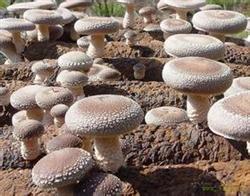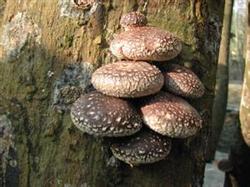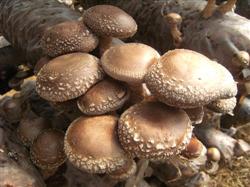Control of Diseases and insect pests in the cultivation of Lentinus edodes

There are many kinds of miscellaneous bacteria parasitic on mushroom wood, such as Trichoderma, Schizophyllum, birch, fan and so on. In terms of pests, slugs, snails, horse land, etc., harmful to fresh mushrooms, longicorn beetles, bark beetles and termites harmful to mushroom trees. In terms of prevention and control, we should carry out the policy of "prevention first, comprehensive control", strengthen the scientific management of mushroom farms in mushroom trees, and create an environment conducive to the growth of Lentinus edodes and disadvantageous to the occurrence of miscellaneous bacteria and pests. Take precautions and put them out in time once they occur. The miscellaneous bacteria on the mushroom wood can be scraped off with a knife or coated with 2% lime water. Snails, slugs and other pests can be artificially killed in the early morning or evening. For termites, arsenous acid (arsenous acid, arsenic, letter stone) 60%, talc powder 40%, or arsenous acid 46%, salicylic acid 15%, iron oxide 5% mixed powder can be used to control termites. Pest control of bag planting: the common miscellaneous bacteria are Trichoderma, Penicillium, Mucor, Rhizopus, Aspergillus, Streptomyces and so on. Common pests are slugs, jumpers, termites and so on. Comprehensive control measures should be taken for the prevention and control of miscellaneous bacteria. In addition to paying attention to the selection of raw materials and strains and the disinfection of sites and utensils, ① culture materials should be fermented first, and the biological heat produced by many kinds of high-temperature microorganisms should be used to kill pests and medium-low temperature bacteria so as to reduce pollution sources. ② was quickly bagged and sterilized. The prepared culture is acidic and suitable for the growth and reproduction of all kinds of microorganisms, so it should be completed within 5 hours as far as possible. During sterilization, the temperature should be raised to 100 ℃ in 6 hours. Cooling and ventilation in ③ culture room can reduce the pollution of miscellaneous bacteria and improve the rate of inoculated products. If you want to prevent Trichoderma contamination, you can first culture the inoculated bag at 16 ℃, when the mycelium of Lentinus edodes can grow, but the spores of Trichoderma are difficult to germinate, and the mycelium grows slowly (the optimum temperature for Trichoderma mycelium growth is 25℃ 30 ℃). After Lentinus edodes mycelium grows to a certain extent on the surface of the culture material, and then gradually increase the temperature, and finally cultured at 25 ℃ until the mycelium grows full of the whole bag. If cultured at 25 ℃ at the beginning, it is beneficial to the growth of Trichoderma hyphae, and the contamination rate of miscellaneous bacteria is high. ④ locally contaminated bacterial bags can be injected with 20% formaldehyde solution or 5% carbonic acid to control the spread of the contamination point. The control of slugs and termites can be carried out with reference to the control methods of tree cultivation. For the prevention and control of jumping insects, 0.1 dichlorvos mixed with a small amount of honey can be used during the mushroom emergence period, or 0.1% fish rattan essence or 150 Mel 200 times pyrethrum solution can be sprayed.
- Prev

Off-season cultivation techniques of Lentinus edodes
1. The cultivation site should be far away from the livestock and poultry barn, pollution-free, ventilated and cool, and close to the water source. The mushroom shed is cultivated in the open field or semi-underground. two。 The cultivation season is generally arranged in early December and in January. The mushrooms were produced from June to August of the following year. 3. Culture formula ① sawdust 78%, wheat bran 2.
- Next

Hanging cultivation techniques of Lentinus edodes in winter
If the scientific inoculation hole is deep, there are more bacteria, which is helpful to enhance the drought resistance of Lentinus edodes mycelium. The mycelium of Lentinus edodes can germinate rapidly and improve the survival rate under the condition of constant temperature and humidity. Hot water buds are accelerated by soaking blocks in hot water, which can double the yield of mushroom pieces.
Related
- Fuxing push coffee new agricultural production and marketing class: lack of small-scale processing plants
- Jujube rice field leisure farm deep ploughing Yilan for five years to create a space for organic food and play
- Nongyu Farm-A trial of organic papaya for brave women with advanced technology
- Four points for attention in the prevention and control of diseases and insect pests of edible fungi
- How to add nutrient solution to Edible Fungi
- Is there any good way to control edible fungus mites?
- Open Inoculation Technology of Edible Fungi
- Is there any clever way to use fertilizer for edible fungus in winter?
- What agents are used to kill the pathogens of edible fungi in the mushroom shed?
- Rapid drying of Edible Fungi

